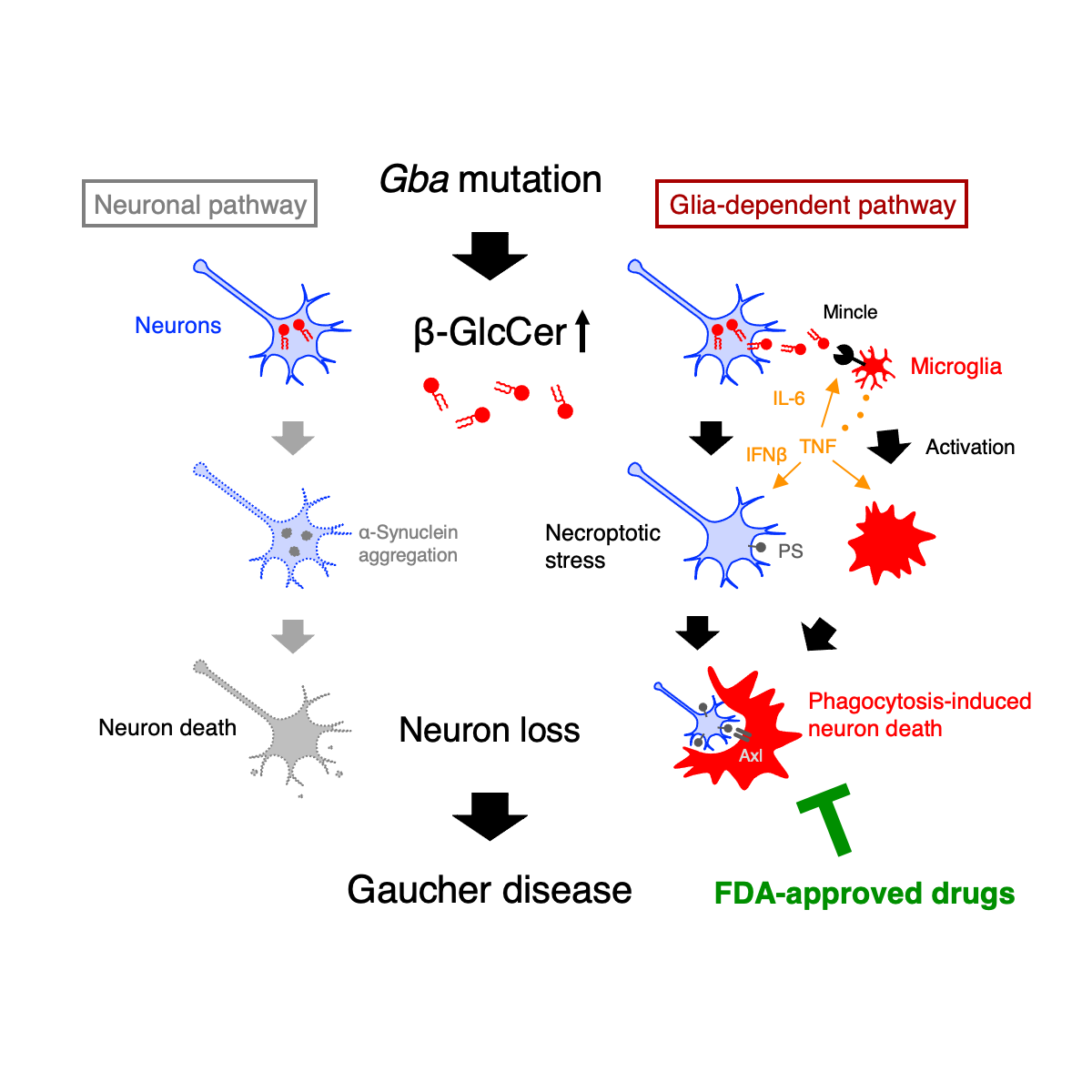Direct activation of microglia by β-glucosylceramide causes phagocytosis of neurons that exacerbates Gaucher disease(Yamasaki Lab, Immunity)
Gaucher disease (GD) is the most common lysosomal storage disease caused by recessive mutations in the degrading enzyme of β-glucosylceramide (β-GlcCer). However, it remains unclear how β-GlcCer causes severe neuronopathic symptoms, which are not fully treated by current therapies. We herein found that b-GlcCer accumulating in GD activated microglia through macrophage-inducible C-type lectin (Mincle) to induce phagocytosis of living neurons, which exacerbated Gaucher symptoms. This process was augmented by tumor necrosis factor (TNF) secreted from activated microglia which sensitized neurons for phagocytosis. This characteristic pathology was also observed in human neuronopathic GD. Blockade of these pathways in mice with a combination of FDA-approved drugs, minocycline (microglia activation inhibitor) and etanercept (TNF blocker), effectively protected neurons and ameliorated neuronopathic symptoms. In this study, we propose that limiting unrestrained microglia activation using drug repurposing provides a quickly-applicable therapeutic option for fatal neuronopathic GD.
This article was published in Immunity on February 3, 2023.
Title: “Direct activation of microglia by β-glucosylceramide causes phagocytosis of neurons that exacerbates Gaucher disease”
Authors: Takashi Shimizu, Charles R. Schutt, Yoshihiro Izumi, Noriyuki Tomiyasu, Zakaria Omahdi, Kuniyuki Kano, Hyota Takamatsu, Junken Aoki, Takeshi Bamba, Atsushi Kumanogoh, Masaki Takao, and Sho Yamasaki
DOI:https://doi.org/10.1016/j.immuni.2023.01.008
Links
- Home
- Achievement
- Research Activities
- Direct activation of microglia by β-glucosylceramide causes phagocytosis of neurons that exacerbates Gaucher disease(Yamasaki Lab, Immunity)








